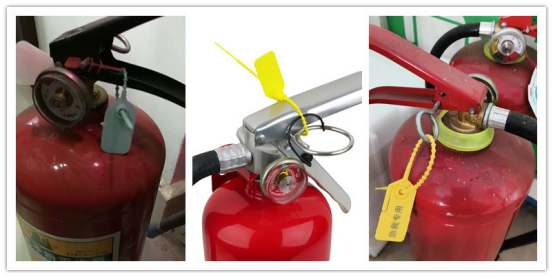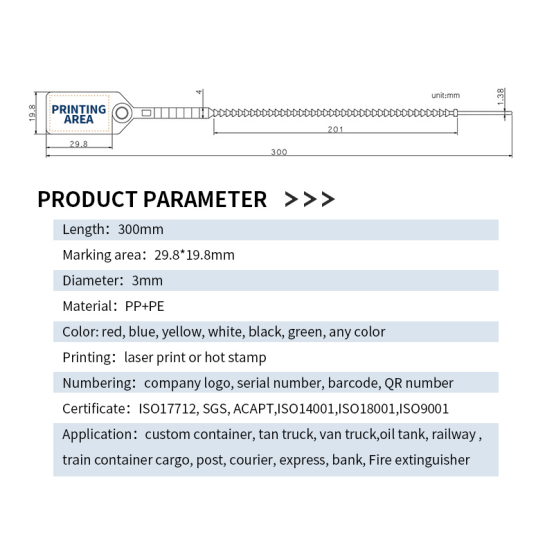fire extinguishers tamper seals are not universally required by the primary US safety standard, but they are highly recommended, widely used, and often mandated by the specific Authority Having Jurisdiction (AHJ).
Here’s a more detailed breakdown:

- The Governing Standard: NFPA 10 In the United States, the standard for fire extinguisher placement, use, and maintenance is NFPA 10: Standard for Portable Fire Extinguishers. This is the document that fire marshals and insurance companies typically follow. What NFPA 10 Says: The standard does not explicitly require a tamper seal lock. Instead, it requires that fire extinguishers must be kept in their designated places and be “operable,” meaning they are fully charged and ready for use. The Intent: The goal is to ensure that if someone needs to use an extinguisher, it hasn’t been partially or fully discharged, vandalized, or had a part removed, rendering it useless in an emergency.
- The Role of fire extinguisher tamper resistant seals While not a strict requirement, tamper seals are the most common and effective way to provide visual assurance that the extinguisher has not been used or tampered with since its last inspection. A broken or missing tamper seal is an immediate visual cue during a routine monthly inspection that the extinguisher needs to be professionally serviced.
- The Critical Distinction: Tamper Seal vs. Pull Pin It’s crucial to understand the difference: Tamper Seal: A thin plastic or metal strip that holds the pull pin in place. It is designed to be easily broken and is a non-locking device. Its sole purpose is to show evidence of tampering. Pull Pin: This is the metal pin that physically prevents the handle from being squeezed and discharging the extinguisher. The pull pin is a required, integral safety component. An extinguisher is considered inoperable without its pull pin. You should NEVER use a tamper seal as a substitute for the pull pin. The seal only provides a visual indicator; the pin provides the physical lock.
- When Are They Effectively “Required”? In practice, tamper seals are so ingrained in safety protocols that they are effectively required in these situations: Authority Having Jurisdiction (AHJ): Your local Fire Marshal, insurance company inspector, or other AHJ will almost certainly require them as part of their inspection. They are a simple way to prove compliance with the “operable” requirement. NFPA 10 Inspection Compliance: During the mandatory monthly visual inspection, the person checking the extinguisher must verify it is “in the proper location, unobstructed, and has no visible physical damage, corrosion, or tampering.” A tamper seal makes verifying “no tampering” instant and foolproof. After Professional Service: When a fire protection company performs its annual maintenance or a 6-year overhaul, they will always install a new tamper seal. An extinguisher without one after service would be considered incomplete by the technician.

| Scenario | Is a Tamper Seal Required? |
| By the letter of NFPA 10? | No, but it is the best way to prove the extinguisher is operable. |
| By most Fire Marshals (AHJ)? | Effectively, Yes. It’s the standard they expect to see. |
| For safety best practice? | Absolutely Yes. It provides a critical, immediate visual check. |
| Is the PULL PIN required? | YES. This is mandatory. |

While NFPA 10 focuses on the operability of the fire extinguisher rather than mandating a specific seal, you should always have an intact disposable tamper seal on your fire extinguishers. It is a critical component of a compliant and effective fire safety program. If a seal is broken or missing, it is a sign that the extinguisher must be inspected by a professional immediately.

Keyword:
#fire extinguishers tamper seals
